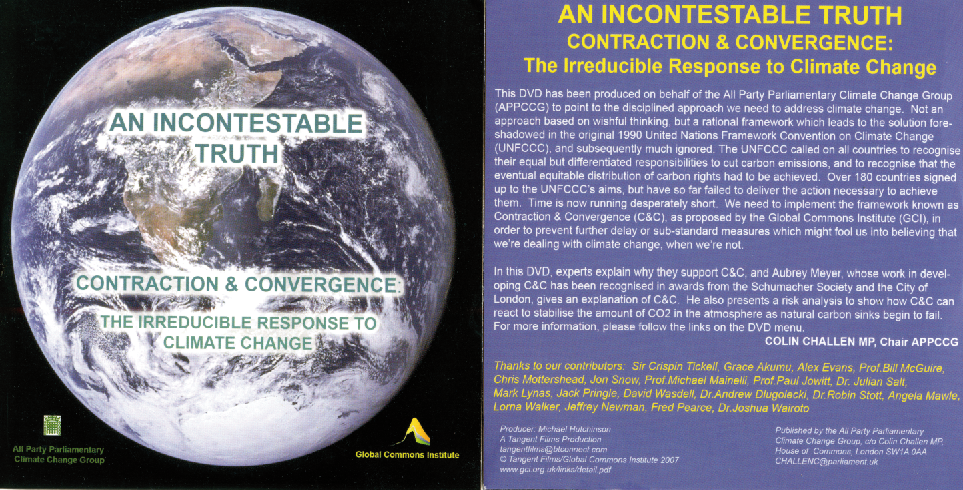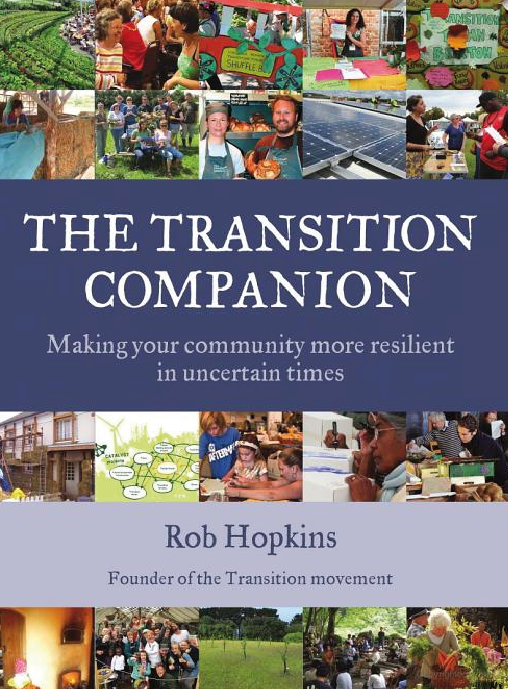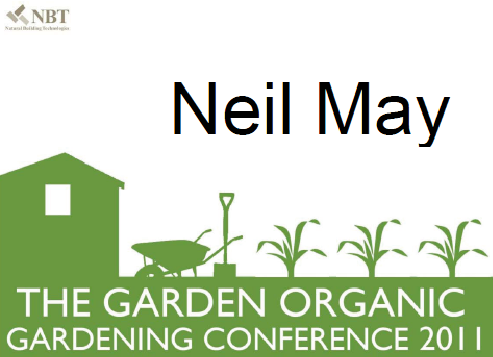Hi Aubrey
Yes, happy to co-sign this.
I've yet to see anything better than contraction and convergence as a global response to a concerted push for reducing carbon emissions.
Cheers
Rob
Dr. Rob Hopkins, Transition Network.
Rob said one of the really interesting things he’s seen is the idea that resilience is something that needs to happen everywhere, not just here [in the developed world].He went on to say,
“We’ve creamed the fat off the developing world for the last 400 years, and the idea that we would put up the fence and say ‘we’ll not sort this out for ourselves’ is irresponsible. We need to have two processes that run in parallel–re-localization here, understanding that total re-localization is impossible, but maybe working toward an 80-percent/20-percent mix of local and imported goods. There’s the process of contraction and convergence, with the developed world scaling down and the developing world scaling up. Helping to create food security in the developing world is really necessary.”
U.K. 5th U.K. Transition Conference
Liverpool Hope University July 2011Global policy is likely to resemble the Contraction and Convergence (“C&C”) Framework from the Global Commons Institute (GCI). It applies a principle of equity for all, ie, we all have the same right to produce CO2. So we can plot lines for our nations current per-capita footprint to the sustainable equity footprint at some future point and that will represent the rate at which we HAVE to cut emissions. We would have to cut CO2 emissions by 90% by 2030. (Alternatively, to meet the 400ppm deadline in 2016, we have to aim to cut GHG emissions by 60% within ten years.) As a country our Government has committed us to cut CO2 emissions 12.5% below 1990 levels before 2012 (under the Kyoto Protocol) and by 60% by 2050. The figures are only different because of the level of risk our leaders POLITICALLY are willing to face. However the choice is clear. We have to make enormous cuts and quickly. There is nothing to stop Local Councils adopting a Target-Based Contraction Framework based upon any of these figures.
Contraction and Convergence (C&C) is a proposed global framework for reducing greenhouse gas emissions to combat climate change. Conceived by the Global Commons Institute in the early 1990's, the Contraction and Convergence strategy consists of reducing overall emissions of greenhouse gases to a safe level (Contraction) where the global emissions are reduced because every country brings emissions per capita to a level which is equal for all countries (Convergence). The Global Commons Institute was founded in the United Kingdom in 1990 by Aubrey Meyer and others to campaign for a fair way to tackle climate change. Contraction and Convergence is intended to form the basis of an international agreement which will reduce carbon emissions to avoid climate change. It is expressed as a simple mathematical formula. This formula can be used as a way for the world to stabilize carbon levels at any level. The supporters of Contraction and Convergence anticipate that future negotiations would focus solely on what that final level should be.
Climate Change - An Incontestable Truth Many Eminent Contributors
"The UK All Party Parliamentary Climate Change Group has sets out a disciplined approach to address climate change through a framework of “contraction and convergence”.Â
This DVD was produced on behalf of the UK House of Commons All Party Parliamentary Climate Change Group of MPs (APPCCG) by GCI and Tangent Films. It was distributed to all sitting UK MPs in 2007. It points to the disciplined approach we need to address climate change. Not an approach based on wishful thinking, but a rational framework which leads to the solution foreshadowed in the original 1990 United Nations Framework Convention on Climate Change (UNFCCC), and subsequently much ignored.
The UNFCCC called on all countries to recognise their equal but differentiated responsibilities to cut carbon emissions, and to recognise that the eventual equitable distribution of carbon rights had to be achieved. Over 180 countries signed up to the UNFCCC's aims, but have so far failed to deliver the action necessary to achieve them. Time is now running desperately short. We need to implement the framework known as Contraction & Convergence (C&C), as proposed by the Global Commons Institute (GCI), in order to prevent further delay or sub-standard measures which might fool us into believing that we're dealing with climate change, when we're not.
This DVD gives an explanation of C&C. Experts also explain why they support C&C and Aubrey Meyer, whose work in developing C&C has been recognised in awards from the Schumacher Society and the City of London. He presents a risk analysis to show how C&C can react to stabilise the amount of C02 in the atmosphere as natural carbon sinks begin to fail. For more information, please follow these links
Thanks to our contributors: Sir Crispin Tickell, Grace Akumu, Alex Evans, Prof. Bill McGuire, Chris Motters-head, Jon Snow, Prof. Michael Mainelli, Prof Paul Jowitt, Dr. Julian Salt, Mark Lynas, Jack Pringle, David Wasdel, Dr. Andrew Dlugolecki, Dr. Robin Stott, Angela Mawle, Lorna Walker, Jeffrey Newman, Fred Pearce, Dr. Joshua Wairoto.
COLIN CHALLEN MP, Chair APPCCG
Contraction and Convergence - An Incontestable Truth [1]
The Irreducible Response to Climate Change [2]
Strong international climate change protocols, Contraction & Convergence, a moratorium on biodiesal production, Oil Depletion Protocol. rethinking economic growth, biodiversity prtoection, a realistically high price on carbon.
Strong climate change legislation, Tradable Energy Quotas, a national food security strategy, devolution of of powers to local communities, support for the relocalisation of industry. Transition initiatives, Energy Descent Plans, Climate Friendly Communities, Community Supported Agriculture, land trusts, credits unions, locally owned energy supply companies. The first speaker was Dr. Robin Stott, a GP and Chairman of the UK Medical Peace and Environment Group. His talk looked at the implications of climate change on our approach to healthcare. Climate change, he argued, is the most siugnificant public health problem of this century. The other challenge that sits alongside it is that of global inequity and the lack of social equity. Climate change, initially at least, will affect the poorer people in the world most gravely. Our responses need to include informing people and organisations, affirming that we need to both put our own houses in order and advocate for global solutions, and identifying frameworks for global agreement. The model Stott put forward, which will not be new to regular readers of Transition Culture, is Contraction and Convergence. C&C promotes an equitable global agreement, which would reign in the emissions of more affluent nations while also allowing sustainable development of poorer nations. It transfers money to poorer nations and creates a policy virtuous cycle which enables economic and social progress within environmental limits. If brought into operation, he argued, it would unleash a boom in low carbon technologies, and would do much to avert the potential public health catastrophe the potential for which is inherent within the climate change crisis.
The first evening was a talk by Aubrey Meyer, originator of the Contraction and Convergence approach. As well as being an extraordinary climate change activist, he is also a concert violinist, and his talk featured some virtuouso playing as well as a passionate setting out of the case for Contraction and Convergence as a response to climate change. You can read a part of the interview I did with him earlier that day exploring the relationship between peak oil and climate change [here].
The Third Great Transition:
A contraction-and-convergence approach in which the rich nations cut back voluntarily on consumption, and share equitably with poor countries, while everyone works to reduce human population in the long run to two to three billion people, and ecosystem protection becomes a top international priority. This requires not a technological revolution, but rather a spiritual one, in which we enter into a partnership with nature to maintain the Earth's living systems. Like scenario number two, this would be wonderful, but also seems unlikely: in this case we face deep-set cultural and perhaps even biological behavior patterns that would make it extremely difficult for people to change from attitudes of personal and tribal selfishness to a primary concern for humanity and the Earth as a whole.
Green City Blue Lake
Cleveland OHIOTransition, Managed politically led UN programmes Contraction and Convergence
Political programmes, Bottom up approach, Transition Towns
Local economies, alternative currencies, EducationThe Organic Gardening Conference 2011
Neil May










